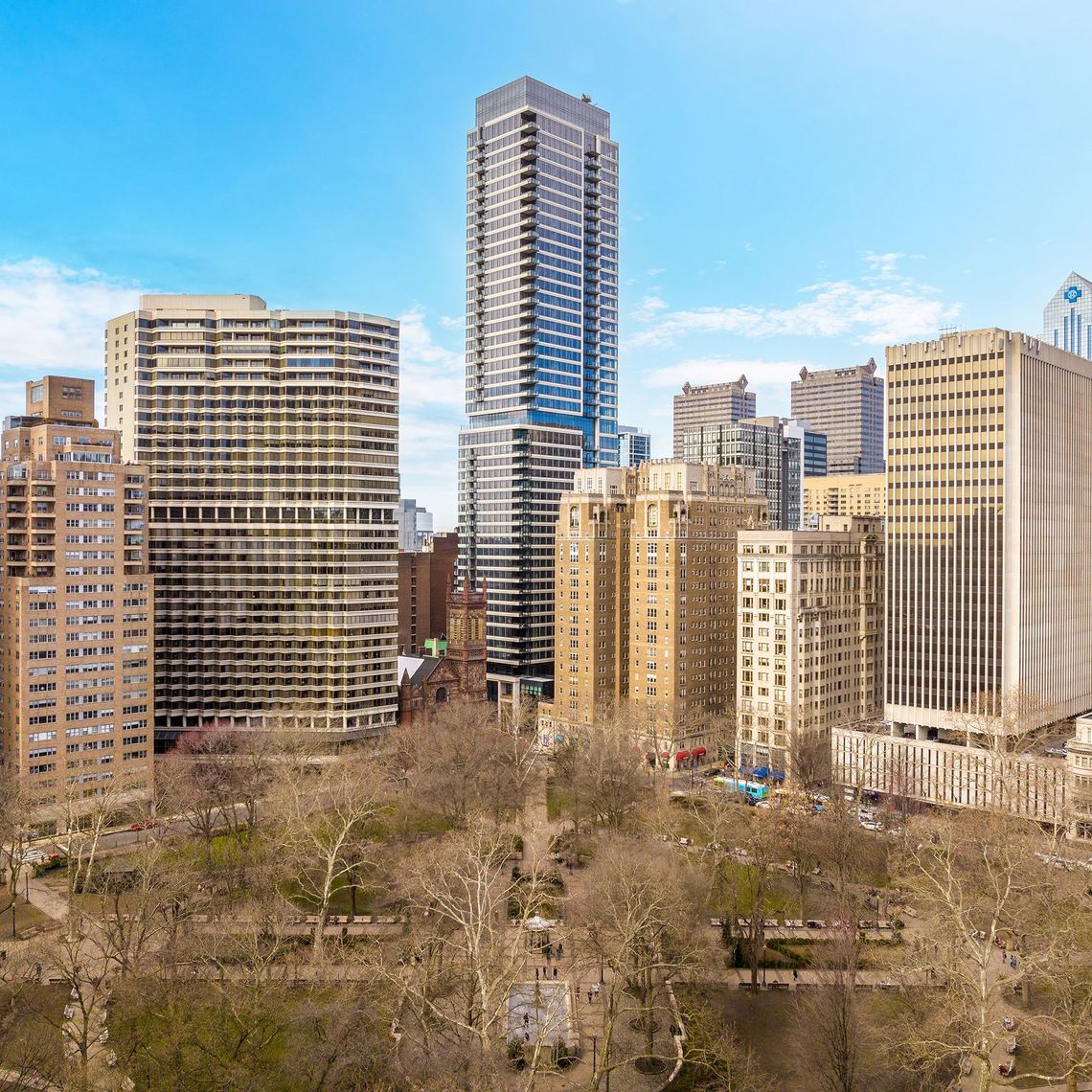
press release
New Report Tracks the Latest Center City Housing Trends
Contact:
JoAnn Loviglio
T 215.440.5546
jloviglio@centercityphila.org
FOR IMMEDIATE RELEASE
CCD/CPDC annual housing report examines city’s residential sector momentum
PHILADELPHIA (February 26, 2024) — For more than 20 years, the fastest growing residential section of Philadelphia has been Greater Center City (Girard Avenue to Tasker Street, river to river) and 2023 proved no different: At just 5.8% of the city’s land area, it accounted for 37% of the city’s total supply of new housing units last year, a new Center City District/Central Philadelphia Development Corp. (CCD/CPDC) report has found.
Moreover, the five ZIP codes immediately adjacent to Greater Center City accounted for another 27% of new units in 2023. Combined, Greater Center City and the adjacent ZIP codes represent 16.2% of the city’s geography but accounted for 63% of the 7,781 new units completed in Philadelphia last year.
“Center City continues to adapt as a thriving, live-work, mixed use downtown,” CCD President and CEO Prema Katari Gupta said. “More residents means steady foot traffic, which attracts restaurants and retailers, increases economic activity, and contributes to a sense of safety and security.”
Greater Center City experienced positive net migration for all years following 2020. According to Placer.ai over 11,000 people migrated to Center City from 2021 to 2023. Placer.ai’s overall population estimates, including additional factors, suggest Center City’s population has grown by 6% within the same period.
Meanwhile, as the demand for office space shifts in cities nationwide and downtowns are grappling with the potential to transition office buildings into residential units, Philadelphia stands as a nationwide leader in office to residential conversions, with many developers taking advantage of the 10-year tax abatement.
“Despite challenging macroeconomic conditions, a significant change to the 10-year tax abatement, and a nationwide discourse on the pandemic’s dismantling of urban life, Greater Center City and adjacent ZIP codes are continuing to see residential investment at unprecedented levels,” Gupta added. “The thousands of units coming online in the next 12 to 24 months will bring more supply online concurrently than ever before, but recent absorption trends and the supply/demand balance observed in Greater Center City bodes well for the ongoing health of the market.”
The report examines the cumulative effects of three decades of growth, the rebound from 2020 and its impact on housing markets, new and upcoming residential developments and homeownership trends, and the status of the rental market.
Among the key findings:
- During a four-year period when the daytime population of Greater Center City has contracted by 8%, residential growth has been a bright spot: Greater Center City’s population has grown by 3% over the last four years.
- From 2011 to 2023, the population of Greater Center City has increased by 26% and the number of housing units has kept pace, growing in Center City by 24% from 2011 to 2022.
- After a pause in housing production in 2020, momentum has returned, with 7,429 units added to Greater Center City since 2021 and 7,181 more in the pipeline.
- Workers living less than two miles away from their offices have returned to the office at a rate of 90%, compared with 70% overall. A growing population closer to the region’s economic center means shorter commutes, less traffic congestion and air pollution, and more lively workplaces.
For a narrative of trends, along with explanatory charts and maps, read and download the new 20-page housing report at Center City Housing Report.
In The News
- February 27, 2024 | Center City’s population growth has kept up with housing construction for a decade. Now comes a record number of new homes., The Philadelphia Inquirer
- February 27, 2024 | Number of new housing units in Center City area hits 5-year high, WHYY PlanPhilly
- February 27, 2024 | Center City gets a flood of new apartments, and a population to match, Philadelphia Business Journal
- February 27, 2024 | Center City Philadelphia continues to attract new residents, which is helping overall recovery downtown, KYW Newsradio
***
Center City District, a private-sector organization dedicated to making Center City Philadelphia clean, safe and attractive, is committed to maintaining Center City’s competitive edge as a regional employment center, a quality place to live, and a premier regional destination for dining, shopping and cultural attractions.